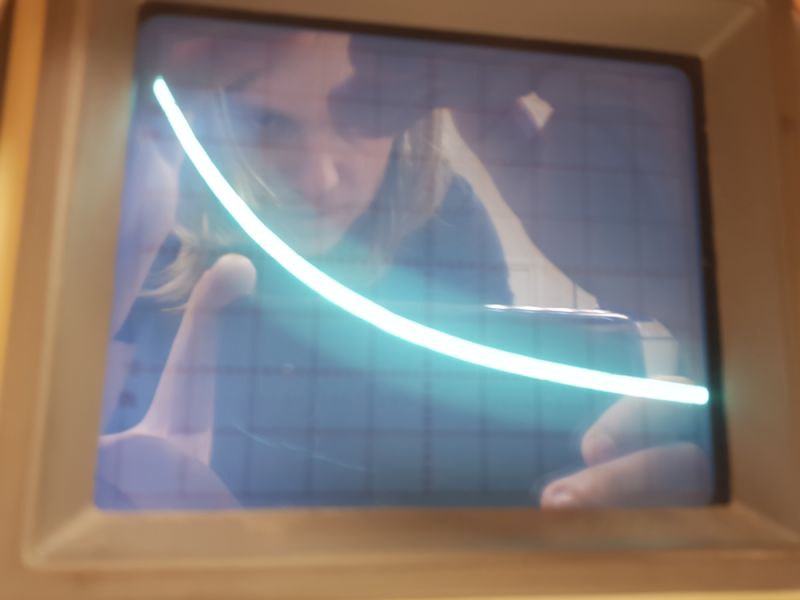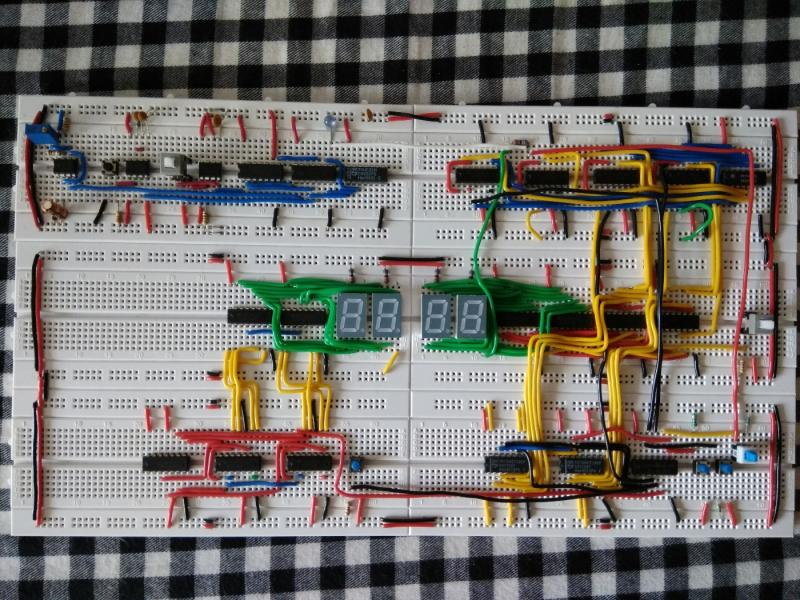Ranter
Join devRant
Do all the things like
++ or -- rants, post your own rants, comment on others' rants and build your customized dev avatar
Sign Up
Pipeless API

From the creators of devRant, Pipeless lets you power real-time personalized recommendations and activity feeds using a simple API
Learn More
Comments
-
Sounds strange! I can think of two explanations that boil down to establishing minimal contact so that voltage gets through, but with considerable resistance so that high current would cause heat there.
1) the switch wasn't put into fully on position, either by not moving it completely (or jammed by dirt) or because something was bent.
2) at least one of the contact areas was dirty or corroded. -
 740026937yArcing causes oxidisation, which increases the contact resistance, which leads to more oxidisation, and so on. Maybe the switch was pre-damaged and the inrush current caused the contacts to weld together.
740026937yArcing causes oxidisation, which increases the contact resistance, which leads to more oxidisation, and so on. Maybe the switch was pre-damaged and the inrush current caused the contacts to weld together. -
 Condor315487y@Fast-Nop @7400 thanks for the explanation! I've switched the switch on and off a few times prior, during testing of the connection to the AC-DC supply itself, so I doubt that it's an inrush current issue. That said, the inrush current could very well be far greater than 625W, so perhaps it was something that developed over time. Bad contact or crib death however sounds most plausible. I'll try to do the same experiment later tonight to check this against the new switch.
Condor315487y@Fast-Nop @7400 thanks for the explanation! I've switched the switch on and off a few times prior, during testing of the connection to the AC-DC supply itself, so I doubt that it's an inrush current issue. That said, the inrush current could very well be far greater than 625W, so perhaps it was something that developed over time. Bad contact or crib death however sounds most plausible. I'll try to do the same experiment later tonight to check this against the new switch. -
@Condor you could also use your multimeter to check what the resistance is, compared to directly shorting the two tips of your measurement cables.
-
 Condor315487y@Fast-Nop unfortunately I forgot to do that before opening it up.. the switch has been repaired now (and kept it), but I'm not sure if the reading will be accurate anymore, now that I've opened it up and undid the weld? Nonetheless, I'll try to remember to check this when I get back home 🙂
Condor315487y@Fast-Nop unfortunately I forgot to do that before opening it up.. the switch has been repaired now (and kept it), but I'm not sure if the reading will be accurate anymore, now that I've opened it up and undid the weld? Nonetheless, I'll try to remember to check this when I get back home 🙂 -
@Condor I meant before you put in another switch. Just for checking that it probably works.
-
 Condor315487y@Fast-Nop oh, no I didn't check it but before disassembly it was welded. I kept it running at 30-50W load for several hours after noticing the inability to turn the supply off though, since I had to recharge the laptop overnight. There were no noticeable heat issues though from, say, more than 1 ohm resistance across the switch. And the casement around it is wood so excessive power losses due to resistance would've probably melted the switch and ignited the wood 🤔
Condor315487y@Fast-Nop oh, no I didn't check it but before disassembly it was welded. I kept it running at 30-50W load for several hours after noticing the inability to turn the supply off though, since I had to recharge the laptop overnight. There were no noticeable heat issues though from, say, more than 1 ohm resistance across the switch. And the casement around it is wood so excessive power losses due to resistance would've probably melted the switch and ignited the wood 🤔
(Wood, terrible choice in electronics enclosures, I know.. but I didn't have anything else on hand 😅) -
 stop65807yMaybe they used an metal with an low melting point and the metal pieces had enough resistance to melt the soldering. The cause why ut was cool could be that the heat was only hot in one small location and fast distributed. That is my theory.
stop65807yMaybe they used an metal with an low melting point and the metal pieces had enough resistance to melt the soldering. The cause why ut was cool could be that the heat was only hot in one small location and fast distributed. That is my theory. -
 Condor315487y@stop the solder was still completely intact.. and the switch contacts are a mechanical connection between what I think are brass sheets. Also, if the metal would melt at the temperature at which solder (40/60 lead-tin alloy) melts, the arcing of the switch when opened (which is over 1000°C) certainly would, even under normal operation. So I doubt that that's the case to be honest. Thanks for the input though!
Condor315487y@stop the solder was still completely intact.. and the switch contacts are a mechanical connection between what I think are brass sheets. Also, if the metal would melt at the temperature at which solder (40/60 lead-tin alloy) melts, the arcing of the switch when opened (which is over 1000°C) certainly would, even under normal operation. So I doubt that that's the case to be honest. Thanks for the input though!
Related Rants

 From today, this beauty is 'ticking' on my desk :D
From today, this beauty is 'ticking' on my desk :D Today at school I borrowed an oscilloscope and a few capacitors and used a circuit I made at home to just demo...
Today at school I borrowed an oscilloscope and a few capacitors and used a circuit I made at home to just demo... My Mini-project for college. Any electronics enthusiasts here?
My Mini-project for college. Any electronics enthusiasts here?
Yesterday I did some experiments with my lab bench power supply to see if everything was working as it should, and whether my newly acquired laptop (old business laptop from 2004) would still power up. Noticed that it did, and left the thing charging for a while - its battery was completely drained. But after letting it sit for a few hours, one of my switches wouldn't turn off anymore.
The lab bench power supply has a 250V 2.5A (625W) rated switch on the AC side, connected to a 50V 10A (500W) AC-DC power supply. The DC side of that is then connected to 2 DPS5005 units, of which one was driving 50W of power into the laptop.
The experiment went reasonably well, the AC-DC power supply was loud but stayed cool like a cucumber. The switch however wouldn't turn off anymore after a few hours. Today I've desoldered that and put on a new one, and did a failure analysis. Turns out that it was a rocker switch (so there's a little nub in there that moves a piece of metal back and forth) and that the contacts of the switch (the piece of metal and the inside of the connector piece) were welded together.
However, the only thing that I know of that causes this welding is when loads are switched off, and an arc is generated. This wasn't the case here - it was just kept on for a couple of hours, with (accounting for power losses across the circuits) 80W going through it at most. I never expected that to cause a weld. Any clue as to why this happened? It really boggles my mind, and I don't want the switch that's currently in there to face the same fate.
question
electronics
switches